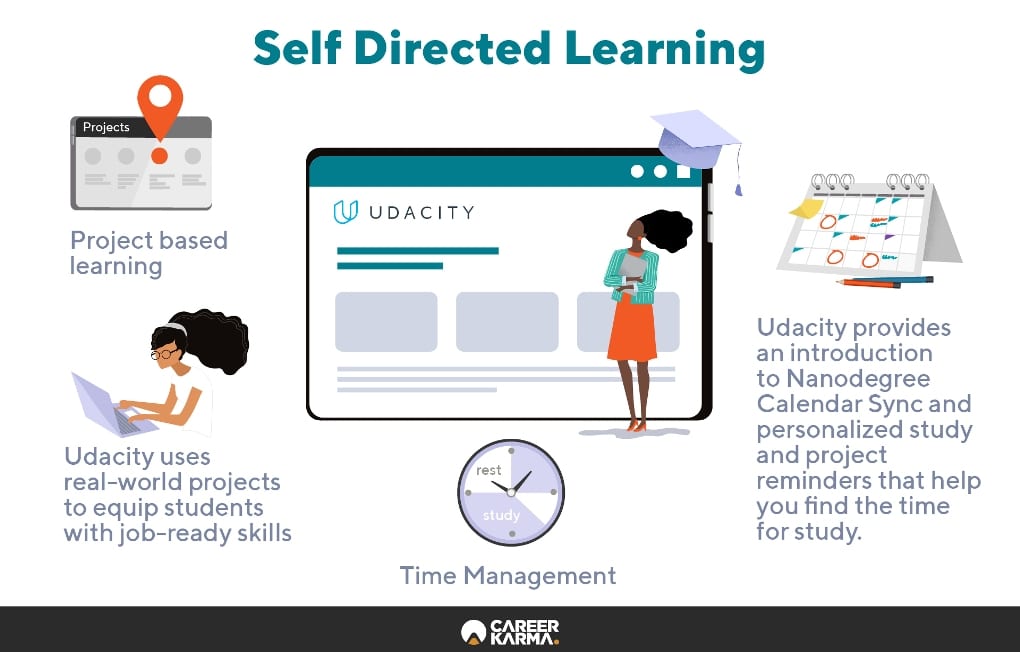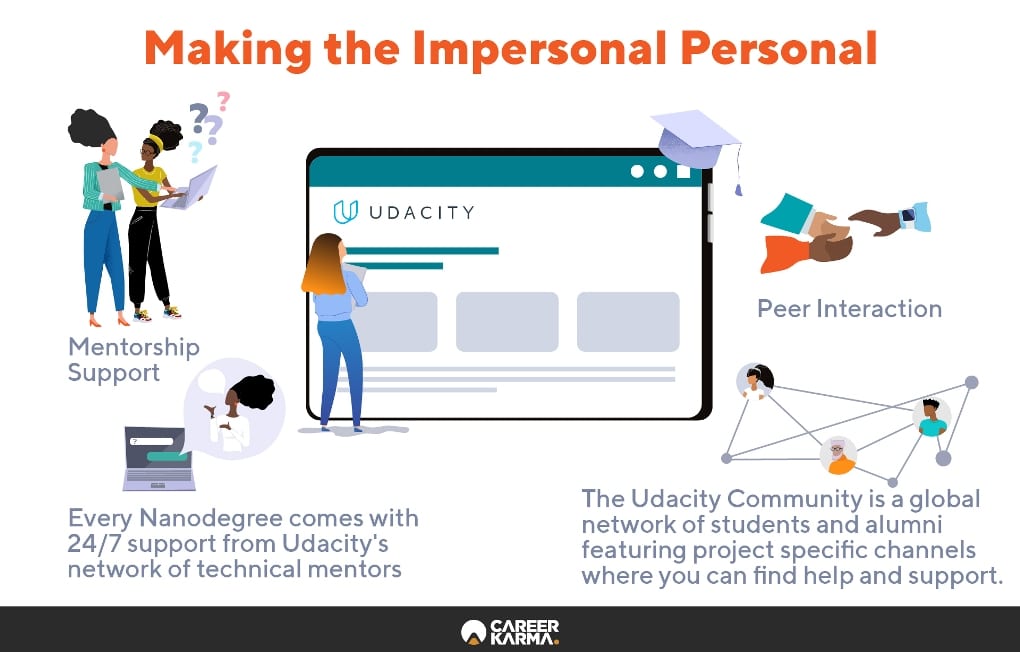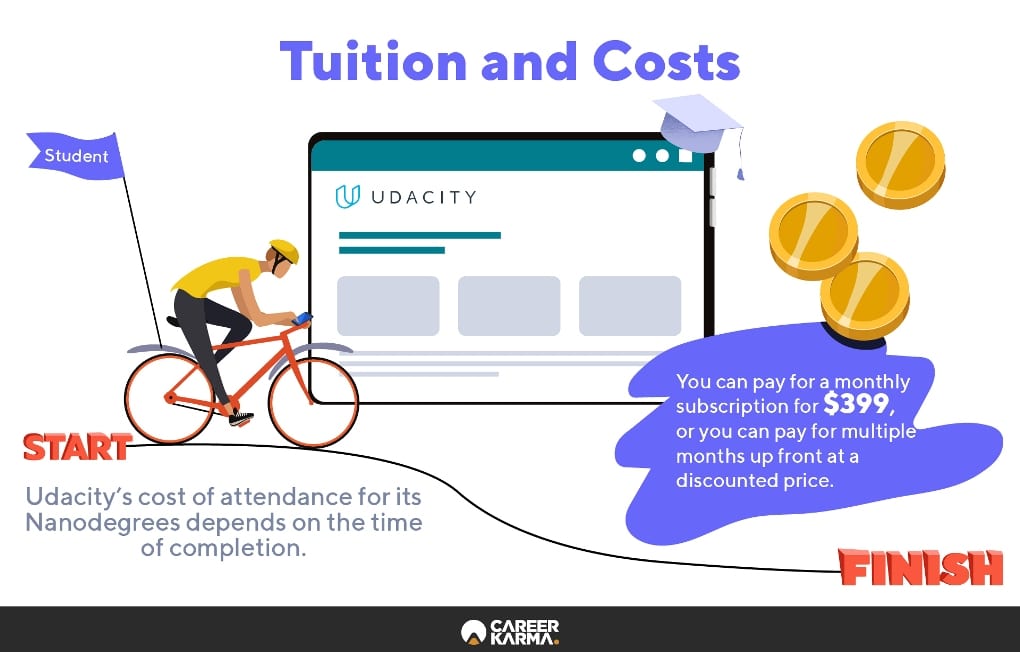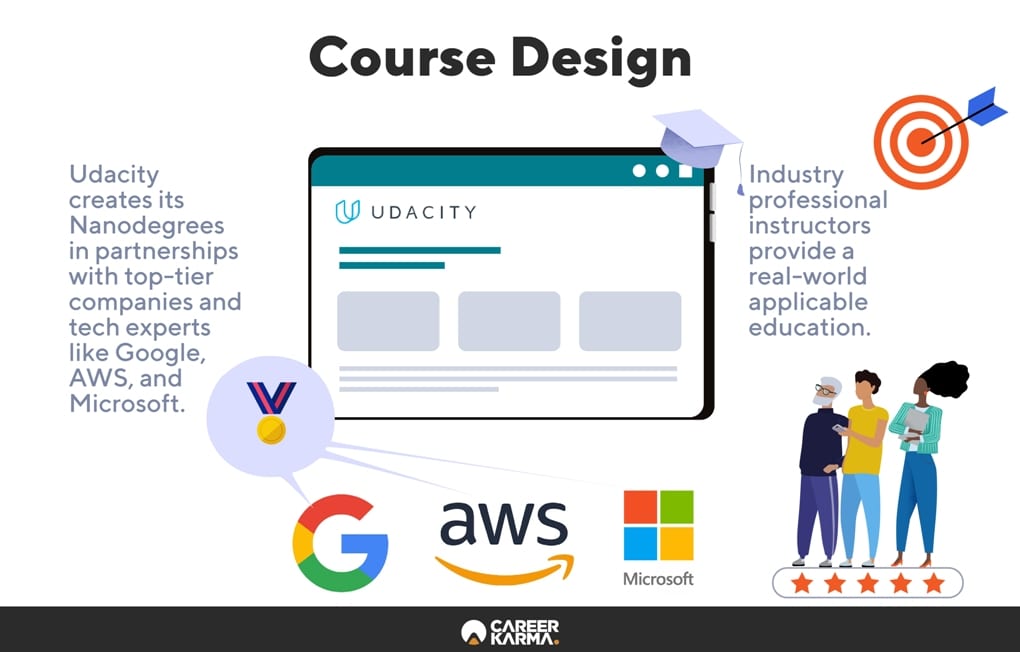Earlier this year, Keith Sun, career services professional from the University of Cincinnati, saw the onset of the coronavirus pandemic as a sign to future-proof his career. His decision came amid “a summer where a furlough or employment termination was a real possibility.” So, he signed up for online courses in digital marketing and business analytics offered by the edtech company, Udacity.
Keith isn’t the only one who saw the writing on the wall. In recent months, the economic anxiety brought by the pandemic has pushed the workforce into what has been touted as “pandemic productivity.” Education sprints became the norm, seen as a way to secure one’s future and workplace relevance. Put another way, skills pay the bills. And with the virus raging outdoors, online learning became the default path.
Since March, enrollment in edtech platforms has surged by multiples, delineating their competitive edge over the traditional learning model. More affordable, more inclusive, and shorter; not to mention, safer. But while such programs have their fair share of rewards, it would be scarcely credible to say that they don’t present any shortcomings.
Indeed, since the entry of online programs a decade ago, to say that they’ve been received with some degree of skepticism and criticism is an understatement. Educators have questioned their ability to replace in-person instruction. Some have emphasized the lack of engagement and focus that comes with learning in silos. As one professor put it, “taking online classes also means that the distractions of the web are right before [the students’] eyes.” Finally, others have pointed out the lack of motivation to show up for a program that neither enforces stringent regulations nor checks the attendance.
Taking in all the criticism, Udacity responded accordingly. It revamped its programs in such a way that it’d be able to bypass the said gaps. The move paid off. Nine years since its inception, Udacity has become a force in the online education space, offering learners the opportunity to participate in some of the most innovative fields in the world.
Student First: The Udacity Mantra
Udacity’s inception was serendipitous, so to speak. It all started when then-Stanford professors and Google fellows Sebastian Thrun and Peter Norvig opened access to their “Introduction to Artificial Intelligence” course. Made available for anyone at zero cost, the course drew in an unprecedented headcount of over 160,000 students from 190 countries. The move became the talk of the town. “Having done this, I can’t teach at Stanford again,” Mr. Thrun said at the time. That year, in 2011, Udacity was born.
The platform, just like many other online course providers, comes with the resounding mission of democratizing education. Udacity has managed to live by this goal through nearly a decade of intensive iteration and experimentation. So, what has it accomplished so far?
Self-Directed Learning

This is perhaps a feature that’s promoted the most by edtech platforms yet also one that’s received the most criticism. The argument goes like this: self-paced online courses do not come with a schedule nor much regulation. Hence, it’ll be easy for students to let classes slide and only put in the bare minimum to get by.
Udacity’s counter-argument goes like this: Not on our watch.
Project-based Learning
At Udacity, real-world projects serve as the foundation of learning, with each tailored to equip students with job-ready skills. Udacity provides you with everything you’ll need to complete a project, from the learning materials and additional resources to the rubric used to grade the project.
Once submitted, a reviewer assesses your project’s consistency against the given benchmarks. If it measures up, your project passes. Otherwise, you receive some feedback for improvement. The process repeats until your project meets the required specifications.
Udacity’s feedback loop operates under the principle that everyone could get an A+ if one maintains that determination to keep trying. It also pushes everyone to put in the maximum effort to master the content.
Time Management and Organization Hacks
It’s easy to lose track of tasks and deadlines when learning in a silo. And sometimes, it’s the little outside help to keep you on your toes that goes a long way. Udacity provides this through its introduction of the Nanodegree Calendar Sync and personalized study and project reminders. Both features allow you to sync your study schedule with your personal and professional commitments. This way, you can still enjoy the flexibility that self-paced learning provides while maintaining a work-life-study balance that everyone desires.
Making the Impersonal Personal

As a report put it: “[the] lack of sufficient interaction is likely online education’s Achilles’ heel.” Students need human interaction. With online learning, interaction only goes so far as staring at the screen for hours on end and watching pre-recorded videos. Right? Not quite. With Udacity, you can actually get something other than screen fatigue.
Mentorship Support
The first point of engagement starts with Udacity’s mentorship program. As soon as you enroll in a Nanodegree, you automatically become eligible for end-to-end support courtesy of Udacity’s network of technical mentors. These mentors come with strong subject-matter knowledge and 24/7 availability to answer your queries.
Have any questions? Ask away on Udacity’s Knowledge forum. In this platform, students can search for existing answers or submit new questions when stuck on a lesson or a project. The questions are queued for and answered by a technical mentor. If the answer provided is unclear or insufficient, you can get further support by asking follow-up questions.
Peer Interaction
Promoting a sense of community is a vital component in any learning experience yet doing so is hardly an easy feat when the primary medium of interaction is through a screen. Enter the Udacity Community. The Community is a thriving global network of students and alumni with whom you can share perspective, advice, adversary, and accomplishments throughout your learning experience. You’ll also have access to project-specific channels where you can ask questions or share knowledge with your peers as you tackle each project in your chosen program.
Tuition and Costs

This is perhaps one of the more important concerns of aspiring learners. Is tuition affordable? Will the return on investment equal or surpass the expense? As a paying student, you’d want to know that your chosen school or institution isn’t pulling a fast one on you.
That said, Udacity’s cost of attendance for its Nanodegrees is contingent on the time of completion. You may pay for a monthly subscription, currently priced at $399, or for several months upfront at a discounted price. Ultimately, your decision lies in the degree of flexibility you’d need to complete a course.
Udacity offers good value for its cost. Does its Nanodegrees cost more than the courses offered by other similar online platforms? Yes, but that’s because Udacity markets career advancement while the latter stops at knowledge advancement.
Are they less expensive than coding bootcamps? Yes. Udacity’s programs cost less than a tenth of the average bootcamp fee. This, however, does not imply a lower quality of instruction. Rather, Udacity seeks to provide learning that’s as intensive as bootcamps but more inclusive, especially for students who may find the latter prohibitively expensive.
Put simply, Udacity tries to make sure the cost of attendance never becomes unreasonable nor unaffordable to students.
Course Design

This one ties up with the cost of attendance and student engagement. As an edtech platform, how does Udacity ensure that its content is compelling enough to hold a student’s attention and significant enough to produce a good ROI? Simple. Udacity designs and creates its Nanodegrees in partnership with the top-tier companies and experts in the tech industry, such as Google, AWS, and Microsoft.
Doing so creates a dual advantage. First, it immediately eliminates the guesswork in determining which skills must be covered in its curricula. Second, it cuts down the speed-to-hire process for both Udacity alums and employers.
It’s worth pointing out that the courses are taught by industry professionals. This means that your comprehension of concepts goes beyond the virtual campus walls. You actually get a firsthand insight into how the skills you’re training for are applied in the real world.
Now that’s the course design, but what about the content? Let’s get down to brass tacks. Hottest right now in the edtech scene are courses and bootcamps that advance tech skills. Unsurprisingly so as these have been seen as a virtual necessity. It’s a view consistent with a LinkedIn survey that identified tech-heavy skills, such as proficiency in blockchain, artificial intelligence, and Cloud computing, as competencies that most recruiters look for. And it’s in these skills that Udacity has built its roots.
Enter Udacity’s signature Nanodegree programs.
Udacity: Learning the Silicon Valley Way
Udacity currently offers over 60 Nanodegrees. Each program falls under six schools, which offer clear points of entry into the tech industry. We know that deciding which program to take can be daunting. So, we’ve picked out some of the most popular and on-demand Nanodegrees from each school.
School of Programming and Development
As an emerging idea goes, “You can either learn to code or get coded.” With code quickly becoming the new literacy, knowing how to read, write, and speak it has become a baseline for productive job performance. It’s this goal that Udacity’s School of Programming and Development wants you to reach.
Introduction to Programming (Beginner)
Average Duration: Four months
Cost: $1,356
This foundational course is your first step towards a career in programming and web development. In as short as four months, you’ll be introduced to the fundamentals of the field, particularly HTML, CSS, Python, and JavaScript. Each module comes with a project through which you get to write your first line of code, create an interactive game, and even build a single-page web app. You know, the basics.
Front End Web Developer (Intermediate)
Average Duration: Four months
Cost: $1,356
The front-end web developer lives by a simple code (pun intended): “People ignore designs that ignore people.” It’s because of this that front-end web developers spend hours designing websites and applications that offer the maximum user experience. Want to know how? Take this course.
Throughout the program, you’ll build websites using CSS, Flexbox, JavaScript, and HTML or applications using Webpack and Service Worker. Your training culminates with a capstone project where you get to create a dynamic online travel application of your design.
Full Stack Web Developer (Intermediate)
Average Duration: Four months
Cost: $1,356
If you’re interested in diving deeper into the field of web development, then perhaps this course is for you. With a curriculum that trains you to write server-side APIs and utilize client-side JavaScript, you’ll have an end-to-end grasp of how the web works. The projects increase in difficulty as you move through the program, increasing your mastery of full-stack web development. You start by building an app’s database and using APIs to control an app. Finally, you move into building the backend for a coffee shop app and deploying an application for the world to see.
School of Artificial Intelligence
Artificial Intelligence is no longer a tech niche. Over the years, AI’s reach has spread beyond the tech industry, exhibiting growth in other sectors such as finance and manufacturing. A case in point: careers in AI topped this year’s LinkedIn Emerging Jobs Report, proving that skills in the field are becoming increasingly relevant in today’s economy. Udacity’s School of Artificial Intelligence offers Nanodegrees designed to make students ready to ride the rising tide.
Deep Learning (Intermediate)
Average Duration: Four months
Cost: $1,356
This Nanodegree transforms you from a beginner to an expert in neural networks. You’ll begin with building your first network from scratch with Python and NumPy and gradually progress into building multi-layer neural networks. Sounds boring? Well, it’s anything but. To demonstrate, one of your projects is called the “Dog Breed Classifier” where you get to design and train a network to correctly identify breeds of dogs from just analyzing their images.
Artificial Intelligence for Trading (Intermediate)
Average Duration: Six months
Cost: $2,034
Get to know how AI is revolutionizing stock trading with this Nanodegree. You’ll analyze financial market data with predictive models and machine learning algorithms. You’ll even use Python to come up with trading strategies and construct a portfolio with advanced optimization techniques. Forget the traditional belief that “trading is an art form, not a science.” This course shows you that it’s more than possible to excel in finance through science.
Machine Learning Engineer (Advanced)
Average Duration: Three months
Cost: $1,017
Machine learning engineers are in a position to ask for over $140,000 in base salary alone, according to Forbes. And that’s because the role is in exceptionally high demand. This program helps you to tap into such a lucrative opportunity. In just three months, you’ll learn about machine learning algorithms and deployment techniques. By the end of it, you’d have created a project that demonstrates your mastery of end-to-end machine learning skills which will go straight into your job-ready portfolio.
School of Cloud Computing
Certification in Cloud computing demonstrates your ability to change how a company operates entirely. This may be in the way resources are managed or how data is stored, accessed, and protected. Either way, the varied ways by which Cloud computing can be applied has led to the creation of different concentrations in the field.
Cloud Developer (Intermediate)
Average Duration: Four months
Cost: $1,356
Cloud developers are simply software engineers who specialize in designing, creating, and maintaining cloud systems. In this course, you’ll get hands-on experience in executing such tasks through projects that’ll see you designing and deploying static websites and cloud-based applications. The program culminates with a capstone project that’ll allow you to build an application of your choosing on Amazon Web Services.
Cloud DevOps Engineer (Intermediate)
Average Duration: Four months
Cost: $1,356
Although it only appeared a few years ago, the role (which is a portmanteau of “development” and “operations”) has become one of the most sought-after jobs today. It’s so in demand that in 2018, the role topped LinkedIn’s Most-Recruited Jobs Report. To get you up to speed with the job, this course provides you with the practical experience to build CI/CD pipelines using Jenkins and deploy microservice applications at scale, among others.
AWS Cloud Architect (Advanced)
Average Duration: Three months
Cost: $1,017
On a typical day, an AWS Cloud architect can be found—for lack of a better word—architecting Cloud-based solutions to migrate a company’s existing workload to the largest Cloud-computing platform: the AWS Cloud. This program gives you a firsthand view of a day in the life of these architects, from training you to plan, design, and execute secure Cloud infrastructure in AWS.
School of Data Science
With the amount of data that we generate every day, the demand for professionals who can generate valuable insights from raw and unstructured data has become louder than ever. In comes the data scientist, previously dubbed the sexiest job of the 21st century. If you want to get on the fitness trend, here’s a sample of Udacity’s School of Data Science.
Programming for Data Science with Python (Beginner)
Average Duration: Three months
Cost: $1,017
This foundational course will walk you through the programming fundamentals essential for a data science career with a heavy focus on Python, the most widely used programming language in the field. Included in the program are lectures and projects that teach you how to use SQL, Terminal, and Git. Once you’ve mastered its content, then perhaps try another language with Udacity’s Programming for Data Science with R.
Data Analyst (Intermediate)
Average Duration: Four months
Cost: $1,356
Advance your programming skills and help organizations make better and data-driven decisions by enrolling in this Nanodegree. You’ll get a front-row seat as the course takes you through the data analysis cycle, from teaching you how to manipulate and analyze data, create visualizations, and use these to tell a story to your clients.
Data Engineer (Advanced)
Average Duration: Five months
Cost: $1,695
This program offers an ideal path for programmers interested in data science. Or, from another perspective, data scientists who are interested in doing more software engineering. Whichever view you’d like to take, this course trains you in navigating massive datasets to build data warehouses and fault-tolerant pipelines. There’s just one catch: to excel in the program you’ll need to have an intermediate understanding of Python and SQL.
School of Autonomous Systems
We’re surrounded by robots. That’s hardly a secret. Another thing that’s not a secret is how essential it’s become to be able to engage in a human-machine partnership to stay relevant in the workplace. The following are some of the programs that Udacity’s School of Autonomous Systems offers to keep you primed and ready to work side by side with robots.
C++ (Intermediate)
Average Duration: Four months
Cost: $1,356
To work with robots, you need to speak their language. This program trains you into executing five real-world projects that will transform you into a proficient C++ speaker. The projects include writing a process monitor, building a traffic simulator, and, ultimately, your C++ application. To optimize your chances of navigating the course, it’s best to arm yourself with an intermediate understanding of any programming language.
Self-Driving Car Engineer (Advanced)
Average Duration: Six months
Cost: $2,034
These professionals are still quite a rarity in the industry. And so is this program, with it being one of the few courses that concentrate on autonomous vehicles. Within six months, you’ll find yourself working on nine projects, all of which are designed to prepare you for a range of roles in the sector. Still on the fence? Then perhaps this will draw your interest. One of the projects you’ll work on involves running your code on Carla, none other than Udacity’s very own self-driving car.
Robotics Software Engineer (Advanced)
Average Duration: Four months
Cost: $1,356
If you’re a visionary with a taste for pushing the limits of robotic invention, then this program is for you. You’ll learn the most important robotics algorithms as well as how to implement them with C++, Ros framework, and Gazebo. The program includes exciting projects that will challenge and excite you. Among these are designing your robot, building a robotic environment in which to house your robot, and programming it to do lots of things like chasing a ball or identifying its location.
School of Business
Over the years, we’ve witnessed how the wave of digital disruption has propelled the business sector to new heights. To catch the opportunities it has to offer, try surfing into Udacity’s School of Business Nanodegrees.
Product Manager (Beginner)
Average Duration: Four months
Cost: $1,356
The product manager is responsible for guiding the success of a product from end to end. This program, meanwhile, is designed to guide you through the process of becoming a skilled product manager from end to end. From developing a product strategy and pitching a product vision to creating a comprehensive market plan and leading a product launch, you’ll get to see what exactly happens in a product life cycle.
Digital Marketing (Beginner)
Average Duration: Three months
Cost: $1,017
Look around you. We’re willing to bet that at least one person is using his/her phone, laptop, or some other type of electronic device right this moment. If you’re reading this, then that someone is you. It’s people like you who consume content online that digital marketers seek to target. And if we’re being realistic, that means everyone.
Through this program, you’ll learn to create, optimize, and run marketing content that will draw the attention of consumers via Ads campaigns, social media channels, and Google Analytics. By the end of it, you’d have a portfolio containing the different marketing campaigns you executed along with recommendations for future marketing activities.
Business Analytics (Beginner)
Average Duration: Three months
Cost: $1,017
This program is a great introduction to the latest business analytics practices, techniques, and tools, including Excel, SQL, and Tableau. You’ll get the chance to do projects that involve analyzing data from companies on the New York Stock Exchange and querying a digital music store database. The course caps with a project that entails extracting insights regarding the quality of airlines and airports in the US.
“Experiment Boldly”
Udacity’s comprehensive catalog reflects its dedication to making career-ready skills as accessible and learnable as possible, and its track record solidifies its position. After completing both Digital Marketing and Business Analytics Nanodegrees, Keith Sun transformed into a well-rounded professional, allowing him to secure his position and thrive in it.
“I’ve been able to achieve the highest open rates and click-thru rates on email campaigns. Because of the Business Analytics Nanodegree program, I was able to build my Excel skills to the point where I’ve been able to analyze data and visualize powerful results for my Career Services team when it comes to the courses we teach,” he said. “The data analysis was so compelling that we were able to get a successful proposal for publication in the Journal for the National Association of Colleges & Employers.”
Keith is only one of the 73% of Udacity grads who reported a favorable career outcome post-program while 50% of them received some 33% increase in pay. And the numbers just keep growing. To date, Udacity has registered over 13 million users in more than 160 countries with 150,000 Nanodegree certificates earned.
“I definitely encourage students to experiment and to experiment boldly…Don’t be too overcautious,” said Keith. “Let yourself be a little bit adventurous and try something new. Who knows? You might actually end up being employed in a totally different career that you’ve never realized you’d be interested in…until you tried it.”
So, are you ready to try it? Visit Udacity here.
About us: Career Karma is a platform designed to help job seekers find, research, and connect with job training programs to advance their careers. Learn about the CK publication.




